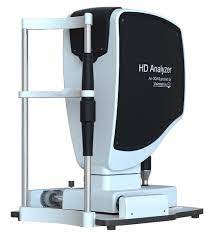
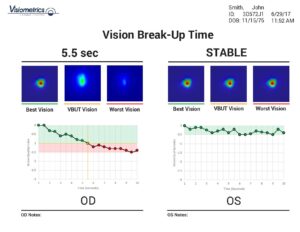
HD Analyzer
HD Analyzer is a precision instrument that quantifies the amount of light scattered within the eye, giving us an objective measurement of visual quality. This is useful for assessing cataracts as it can tell us how severe the cataract is and how it affects vision. It is also able to objectively assess dry eye syndrome by measuring the stability of the tear film, which plays a role in tear production. The stability of the tear film over time was compared to eye scattering to assess the effect of dry eye on vision quality. This helps rule out abnormal tear film that causes vision loss and can also be used to monitor a patient's response to dry eye treatment.
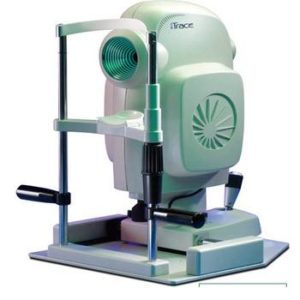
iTrace
A 5-in-1 tool for eye care is provided to analyze complete visual function. A single easy-to-use device can be used to measure the patient's wavefront, corneal topography, pupil size, diopter, and corneal curvature, providing a comprehensive visual acuity assessment quality.
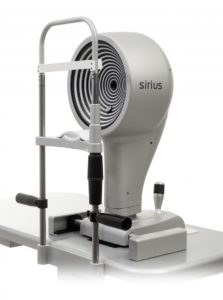
Sirius +
The corneal topography map, which combines the Pradado disc topography map and the Scheimpflug tomography of the anterior segment, provides information on the thickness, height, curvature and diopter of the two corneal surfaces with a diameter of 12 mm. All biomeasurements of the anterior chamber were calculated using up to 100 HR corneal sections.
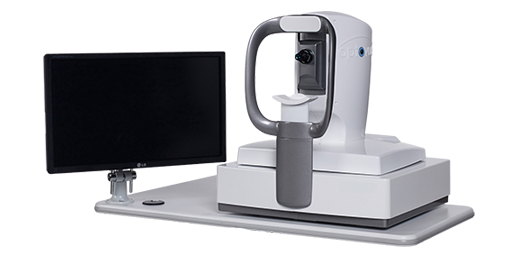
AngioVue OCT
Rapidly test a patient's microvasculature system with a non-invasive, non-fluorescence angiography technique that can be done by a trained technician in seconds. With AngioVue, you can image patients as needed to keep an eye on disease progression and treatment response.
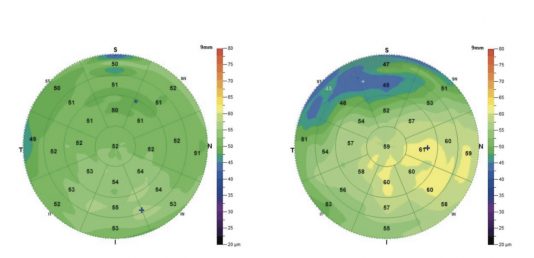
Optovue Epithelial Map
THE PROPRIETARY EPITHELIAL THICKNESS MAP IS THE FIRST NON-CONTACT QUANTITATIVE MEASUREMENT OF CORNEAL EPITHELIUM AND INTERSTITIUM TO HELP YOU ASSESS EARLY OCULAR SURFACE CHANGES TO HELP DIAGNOSE CORNEAL DISEASE. A QUICK TWO-SECOND SCAN IDENTIFIES AREAS OF THICKENING OR THINNING ASSOCIATED WITH DRY EYE, KERATOCONUS, OR PREVIOUS REFRACTIVE SURGERY. CHANGE ANALYSIS ALLOWS YOU TO TRACK CHANGES IN ETM MAPPING OVER TIME, ALLOWING YOU TO ASSESS THE EFFICACY OF CROSS-LINKING OR DRY EYE TREATMENTS. FOR PATIENTS UNDERGOING REFRACTIVE SURGERY, ETM PROVIDES RELIABLE RISK ANALYSIS BY QUANTIFYING EPITHELIAL AND STROMAL THICKNESS, WHICH CAN ALTER SURGICAL PLANNING OR HELP YOU EVALUATE REFRACTIVE SURGERY OUTCOMES.
OSA DRY EYE TEST.
OSA EFFECTIVELY INTEGRATES THE FOLLOWING COMPLEX CHECKS TO PROVIDE USERS WITH DRY EYE RESULTS REPORTS:
- The blep gland imaging imaging imaging.
- Demodex Imaging.
- Photologitis imaging.
- TEARS SPLIT TIME (NIBUT)
- Oil layer assessment.
- The height of the tears.
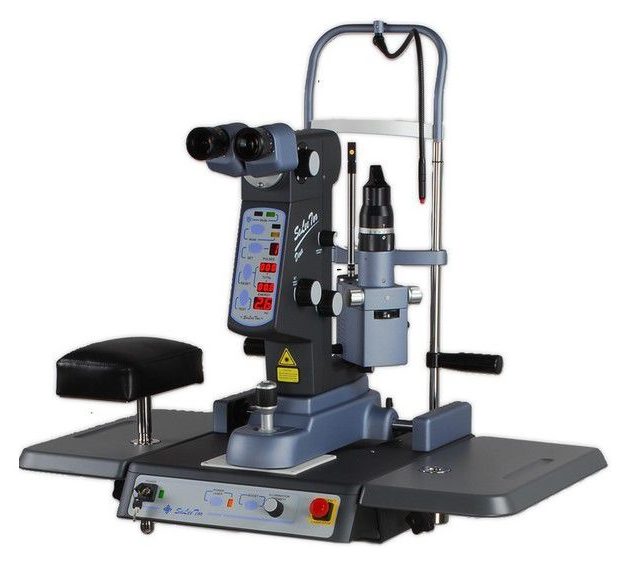
Laser machine.
- Laser treatment of retinal holes.
- Lasers remove glass floats.
- The sac is cloudy after laser removal.
- Laser prevention of acute closed-angle glaucoma.

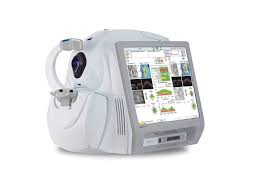
OPTICAL COHERENCE TOMOGRAPHY
Optical coherence tomography
Optical coherent tomography (macular)
- The macular fault scan examined the pattern of the cross-cut structure of the macular area.
- Check for various macular lesions, such as macular edema, macular fractures, geriatric macular lesions, diabetic retinopathy, pre-retinal membranes, etc.
Retinal optical tomography (glaucoma)
- The thickness of the optic nerve head is examined and tomography is scann.
- Check the thickness of the retinal nerve fiber layer and the proportion of the cup/disc of the optic nerve disk.
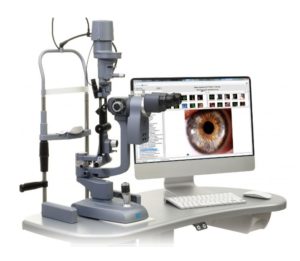
SLIT LAMP SLIT LAMP
- Check the conjunctiva of the eyes, front room, iris, eyelids, lens, retina, spot spots, optic nerves, etc.
- High-resolution digital imaging, still photography and dynamic video help patients and their families understand the condition.
- Rift lamps are usually composed of two parts: a light source and a binocular microscope, i.e. a lighting system and an observation system.
The light source refers to the instrument's light column can change the width and narrowness in both horizontal and vertical directions according to the needs of the lighting, while the binocular microscope focuses on the same position or plane of the light source, which is also the cofocus process of the two parts.
Use a fissure light microscope to examine eyelids, conjunctiva, iris, front room, lens, retina, etc.
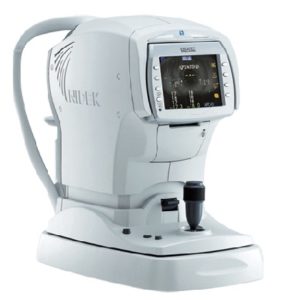
Eye pressure and corneal radial meter.
- Basic optometry, eye adjustment, and rear lighting images can be measured.
- 3D FULLY AUTOMATIC FOCUS AND AUTOMATIC MEASUREMENT.
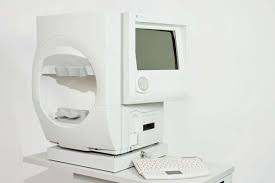
VISUAL FIELD FIELD MEASURING INSTRUMENT
- The sensitivity to light points at different locations of the retina is measured under the fixed background lighting of the instrument.
- Vision testing is primarily used to examine glaucoma and other eye diseases that can cause vision loss, and it helps doctors diagnose and track the condition and determine treatments.
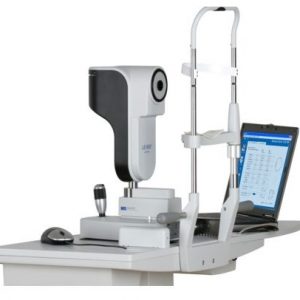
Lenstar intraocular lens measuring instrument
- The patient's corneal radium, the depth of the front room of the axis length, etc. can be accurately measured to accurately calculate the number of artificial crystal degrees used in artificial crystal replacement surgery.
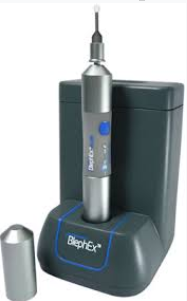
Anterior blepharitis treatment AB Max™
Ab Max ™ provides forward and reverse functions, and the patented PULSE mode is specifically designed to remove even the toughest skins and debris, while gently massaging the eyelid front to improve patient outcomes.
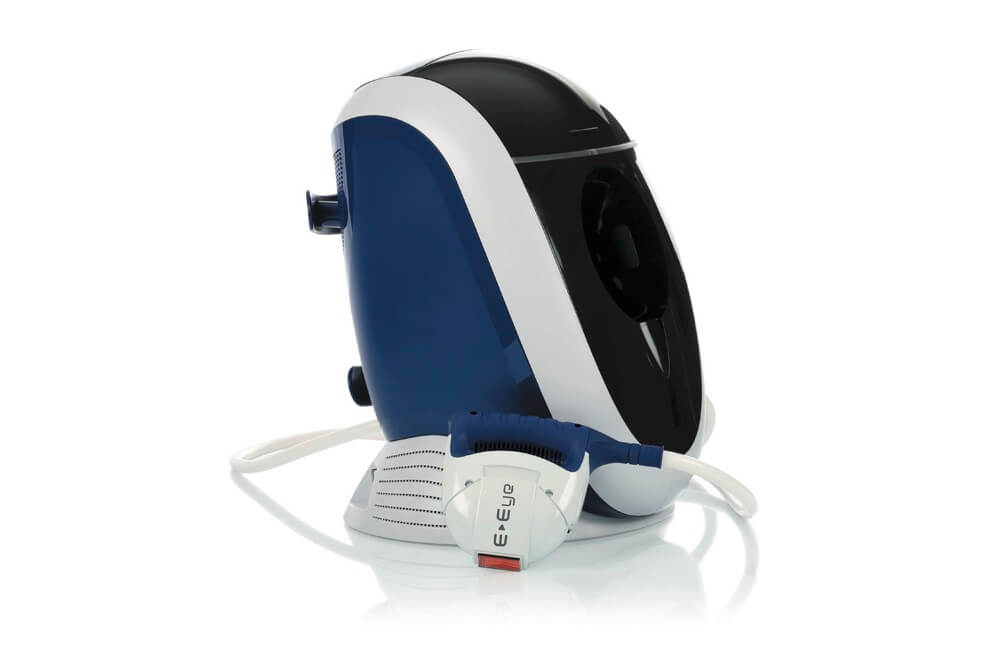
INTENSE PULSED LIGHT (IPL)
E-Eye is a device that produces multicolor pulsed pulses (strong pulsed light or IPL) that directly treat the blepline glands of patients with dry eye. Blepline dysfunction (MGD) is the main cause of dry eye discomfort. In several courses of treatment, E-Eye treatment stimulates the function of these oil-producing glands and restores the lipid layer of the eye. E-Eye's uniformly sequenced light pulses are transmitted in the form of an adjusted pulse sequence. Calculate energy, spectrum, and time periods to stimulate the blepline glands.
It helps patients with dry eye disease by reducing abnormal blood vessels (capillary dilation) secreted around the eyelids, improving the function of the blep glands and reducing the bacterial load around the eyes. The end result: more tears, healthier tears and fewer dry eye symptoms!
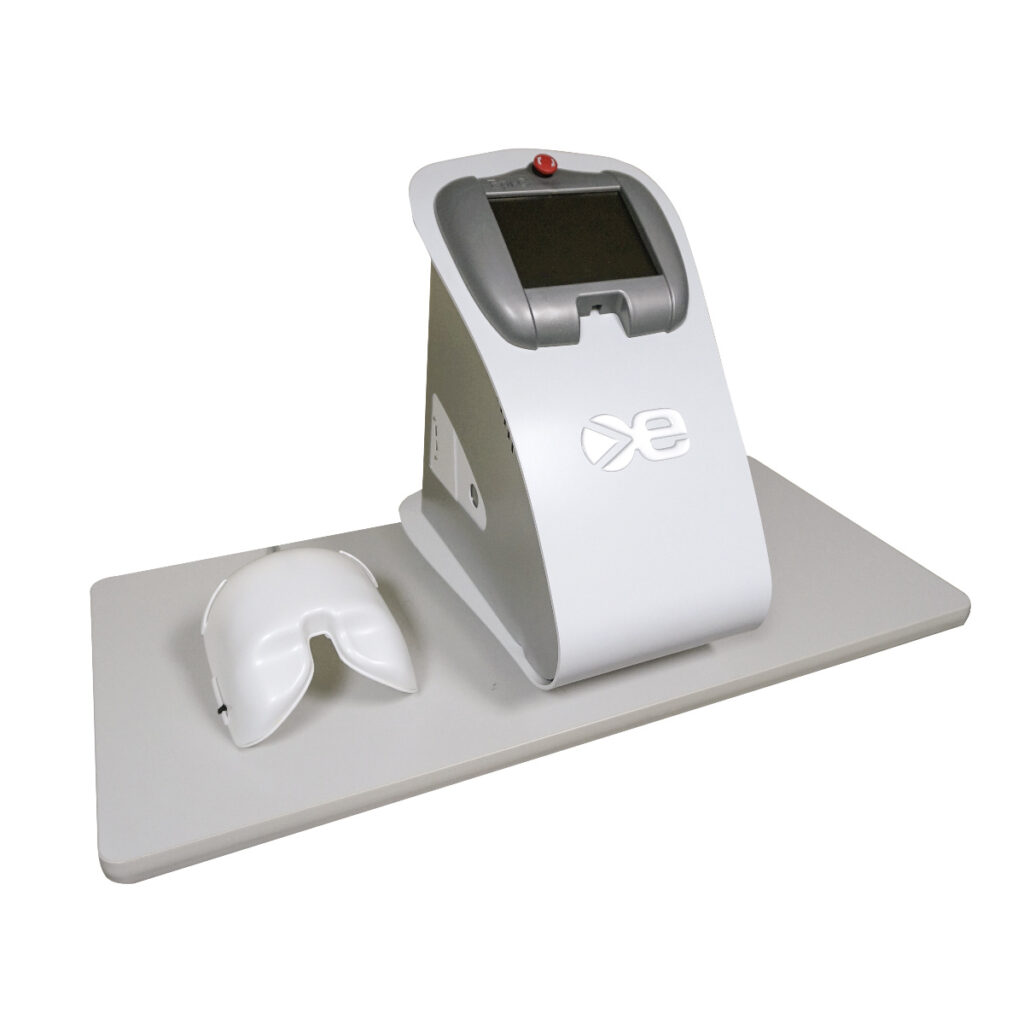
LLLT MASKS UTILIZE MEDICAL-GRADE LEDS FOR LIGHT MODULATION, A PHOTOBIOMODULATION TECHNIQUE THAT STIMULATES THE PRODUCTION OF ATP (ADENOSINE TRIPHOSPHATE) BY EMITTING SPECIFIC WAVELENGTHS OF LIGHT. IT CAN ALSO SIGNIFICANTLY HEAT THE EYELIDS TO TEMPERATURES RECOMMENDED FOR PERIORBITAL HEAT TREATMENT. AN INCREASE IN THE CELLULAR ACTION THAT TRIGGERS ENDOGENOUS HEAT IN COMBINATION WITH EXTERNAL HEAT HEATING HELPS TO STIMULATE THE NORMALIZATION OF THE GLAND. SUCH APPLICATIONS INCLUDE MEIBOMIAN GLAND DYSFUNCTION (MGD), DRY EYE OR BLEPHARITIS, AND STYES.
